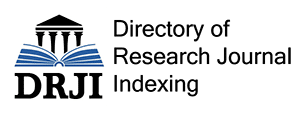Fostering the Religious Tolerance while Teaching History in the Contemporary United States and Georgia
DOI: 10.55804/jtsuSPEKALI-18-5
The article discusses the role of teaching history in fostering the religious tolerance in the contemporary United States and Georgia. This issue is relevant, because historically both countries are tolerant. However, nowadays we come across many cases of discrimination. The article aims to discuss the causes of discrimination and role of education in fostering the religious tolerance. The research is based on the textbooks of history and the curricula of the social sciences adopted by the Ministry of Education of Georgia, as well as by different states. Additionally, the article uses the statistical data about the cases of discrimination in the United States and Georgia.
The United States is religiously diverse, characterized by the religious pluralism and has the tradition of the religious freedom. Historically, it has been considered as the place of the religious tolerance. However, it has not always been tolerant of people of different beliefs. Various religious groups that came to America sought the religious freedom, not tolerance. American writer and scientist Lewis B. Wright noted that the religious groups arriving in the new land wanted to be free from interference of other religious groups or unfriendly government [Nardo, 2010:10]. It is true that millions of people have found "melting pot", where there was freedom of belief, but the problem is that the history of religion in America has been shocking and bloody at times. Some stories are not told in schoolbooks [Davis, 2010], but despite this, teaching history plays an important role in building tolerance. For example, the story of the Huguenots, who came to the new land in 1564 (founding Fort Caroline Colony) in search of religious freedom and were massacred by the Spanish, is not known. Spanish commander, Pedro Menendez de Aviles, wrote to the King of Spain, Philip II (1527-1598), that they had hanged everyone, whom they found in the Huguenots’ colony, because they spread the disgusting Lutheran doctrine. Accordingly, the first meeting of the European Christians on American soil was quite brutal [Davis, 2010].
The Massachusetts Bay Colony may be considered as the most intolerant of the New England colonies. The Puritans, who lived in this colony, were not tolerant of other religious views. For example, the law was passed in Massachusetts in 1658. According to it, if the Quakers expelled from the colony returned, they would be put to death. Afterwards, four Quakers were hanged in Boston (1659-1661) [Nardo, 2010:9]. Famous dissenters, Roger Williams and Anne Hutchinson, were expelled from Massachusetts for the theological disagreements and founded the colony of Rhode Island. They opened wide the door to pluralism, which they called tolerance [Espinosa, 2009:3]. It was the first colony, where the religious freedom was granted to everyone [History, 2018]. The religious tolerance was more characteristic of the central colonies. For example, William Penn, the founder of the Pennsylvania colony, tried to expand the freedom of people (1680s) that meant the freedom of religion as well [Bridges, 2008:45]. Additionally, in the colony of Maryland (Southern Colony), where Catholics lived, the number of Puritans began to grow rapidly after 1640 [Sweet, 1953:33]. In order to strengthen the tolerant attitude, the "Law of Toleration" (1649) was adopted. It allowed Protestants and Catholics to serve. Although the law was later repealed, it was an important step forward towards the religious freedom [History, 2009].
Accordingly, in colonial America we find both tolerant and cruel attitudes between different religious groups. Where did the hatred between the newcomers come from in America? In order to answer this question, we need to familiarize ourselves with the attitude of religious groups to one another in Europe in the 1500-1600s [Nardo, 2010:10]. After Martin Luther started the Reformation movement, Europe was divided into Catholics and Protestants. There are many examples of cruel treatment of Protestants in France. The religious conflict reached its climax on "St. Bartholomew's Night" (1572), when the Catholics killed the Huguenots [Nardo, 2010:10-12].
Although we find the instances of intolerance in colonial America, “The Great Awakening” of 1720-1750 changed religious ideas and worship. The religious gatherings brought all people together - intellectual leaders, poor people, free, enslaved Africans, etc. Such an equal involvement was rare at that time [Hill...2003:252]. The central colonies, where “The Great Awakening” began, were marked by the religious diversity. “The Great Awakening” added more diversity. This movement made Puritanism lose its dominant position and facilitated the emergence of Methodism and Baptism. It prepared the ground for the start of the revolution, which led to the creation of the new state and fundamental changes [Zakariadze, 2018:43].
The founding fathers of the United States expressed the unique unity of the religious freedom and tolerance in their founding documents. Governor of Virginia, Thomas Jefferson, drafted the bill (1779) that ensured the equality of all citizens regardless of creed, as well as the equality of people, who did not follow any religion [Bridges, 2008:152]. Madison wanted Jefferson's idea to become the law of the land. Accordingly, Article 6 of the Constitution of the US states that adherence to any religion shall not be considered as a prerequisite for holding any position [Davis, 2010]. In addition, the law adopted in Virginia inspired the First Amendment to the Constitution of the US, which prohibited the legalization of any religion and gave citizens the right to freedom of worship [Harris, 2009].
“The Great Awakening” and other cases of the religious tolerance or intolerance are described in the curricula of social studies of Massachusetts, New York, California and Hawaii.
In the curriculum of Massachusetts’ history and social studies, tolerance is named as one of the principles of the American democracy. Pupils should conduct researches, text analyses and presentations based on primary sources about the expression of the principles of democracy in the documents on whose basis the United States was founded [Massachusetts Department of Education, 2018:164].
According to the old curriculum of California’s social studies, the importance of the First Great Awakening, which gave rise to the religious tolerance, was taught to the pupils of the 5th grade [California Department of Education, 2000:18]. This issue is presented in the textbook "The Views that Created the New Nation". By completing the given tasks, pupils should develop the ability of critical thinking, which means that a learner can make distinction between facts and opinions, facts and fabricated stories, compare primary and secondary sources, recognize causes and consequences of different events, etc. In addition, a pupil must develop the skill of engagement. He/she should be able to solve a problem and act as a responsible citizen [Hill...2003:19]. One of the lessons, whose theme is "The Life in the Central Colonies", presents the key question (in the beginning) - How did the religious tolerance attract people of different cultures to the central colonies? Pupils should analyze the importance of religion and "The Great Awakening" [Hill... 2003:251-252]. At the end of the lesson, the task - critical thinking - is given. A pupil must answer the following question: Why do you think that "The Great Awakening" had a strong influence on the religious life in the colonies? [Hill... 2003: 255]. The revised curriculum does not mention "The Great Awakening". Although the curriculum aims to promote the religious tolerance, pupils study the problems of religious tolerance and religious freedom in colonial America. For example, they should assess the level of religious freedom in Puritan Massachusetts [Croddy... 2016:25].
Until 2016, according to the curriculum of social studies developed by the California Department of Education, the cases of religious intolerance had been taught to the pupils of the 11th grade, for instance, persecution of Mormons, anti-Catholic sentiment and anti-Semitism [California Department of Education, 2000:48]. Only anti-Semitism can be found in the updated curriculum.
As for the State of Hawaii, according to the curriculum of the social studies, the religious tolerance and intolerance are taught in the 5th grade. Pupils must explain, what role was played by the religion in the early colonial society [Hawaii Department of Education, 2018:9].
According to the curriculum of the social studies of New York, pupils should analyze “The Mayflower Bill” and "The Maryland Toleration Act" [New York Education Department, 2017:34]. These issues are presented in the textbook “The American Vision” (Grade 12). It should be noted that the textbook contains many different types of tasks. During the lesson about the arrival of the Pilgrims in the new land, pupils should look at the primary source “The Mayflower Bill” and answer the main question - Explain what the purpose of “The Mayflower Bill” is? This task is called analyses. The lesson is accompanied by the activity - collaborative learning. A teacher and pupils discuss together the meaning of "The Maryland Tolerance Act". Initially, neither the colonies nor England had such a law. As the number of Protestants began to increase in Maryland, the leaders of the colony wanted to be sure that Catholics would show the religious tolerance by passing this law. "The Maryland Toleration Act" facilitated setting the precedent for the religious freedom in America. Additionally, there was the statute in Rhode Island that guaranteed the religious freedom [McGraw-Hill... 2010:28].
The study published by “The Pew Research Center” in 2017 and 2019 showed that in the US the highest incidence of discrimination was against Muslims. This was caused by the terrorist attack of 11 September 2001 [Masci, 2019]. Even twenty years after this attack, the cases of aggressive attitudes towards American Muslims are increasing. There are many cases of intimidation, physical and verbal abuse of Muslims in different states. Muslims are mentioned with the epithet "terrorist" [Southern Poverty Law Center, 2011].
After the terrorist attack, President George W. Bush condemned the hatred towards Muslims and said - "The face of terrorism is not the true faith of Islam. Islam is peace" [Bush, 2002]. President Barak H. Obama did not use the words "Islamic terrorism" and thought that they were not religious leaders, but terrorists [Dilanian, 2016]. During presidency, he visited the mosque in Baltimore to encourage the religious tolerance. His action was criticized by Donald Trump - "He can visit many places and he chose the mosque" (February 3, 2016). During the presidential campaign, Trump made a number of statements about Muslims that made it clear that he equated terrorism with Islam. For example, Trump addressed the people during his stay in Florida (September 19, 2016): "The Islamic terrorist attacks occurred in Minnesota, New York City and New Jersey, which is caused by the extremely open immigration system" [Johnson... 2017]. In 2018 Trump hosted the dinner for the ambassadors and diplomats during Ramadan. This fact was protested by the groups protecting Muslims’ civil rights. They said that Trump's heated rhetoric led to the increase in discrimination and violence against the Muslim Americans [NBC News, 2018]. As for President Biden, on 2 May 2022 he said: “Around the world we are seeing so many Muslims being targeted with violence. Discrimination and oppression of people because of their faith is not allowed” [The White House, 2022]. Unlike Trump, I think that Bush’s, Obama’s and Biden’s statements and actions prove that they play positive roles in creating a tolerant attitude towards Muslims. They tell the American people that Islam is not terrorism.
California, Oklahoma, Massachusetts, Pennsylvania, New York - these are the states, whose curricula of social sciences include teaching Islam. For example, as I mentioned above, in California the world history and geography are taught in the 7th grade. Pupils study the origins of Islam, the life of Muhammad and his teachings. Pupils familiarize themselves with the first sources "Qur'an/Kuran" and "Hadith", where Muhammad's sayings are presented. The textbook of the world history describes the early Arab conquests, namely, after Muhammad's death. The Arabs showed the tolerance towards the conquered peoples. This led to the spread of Islam. It became the religion of different cultures. At the end of the mentioned chapter, there is the task - assessment. A pupil should answer the following question - Did the Muslims’ tolerance facilitate or limit the spread of Islam? [Burstein... 2006:83]
In addition, pupils study the part of the text of the 10th-century classical Sharia and in small groups discuss what the text states about the early Islamic civilization. The learners may conduct research and make a presentation about influence of classical Sharia on the legal systems of the modern Islamic states. The policy of Ottoman sultan - Suleiman (lawmaker) (1520-1566) - is also taught. He combined the laws existing at that time with Islamic law (Sharia) and adopted the unified legal code that legalized the religious tolerance towards Christians and Jews within the Ottoman Empire [Croddy... 2016:39].
California and Massachusetts curricula consider teaching the systems of various religious beliefs, including Islam. Some Surahs of the Qur'an are presented as primary sources [Massachusetts Department of Education, 2018:141]. According to the curriculum of the social sciences of New York, the same subjects are taught in the 6th and 9th grades.
In the textbook "The American Vision", the subject of the lesson is "The War against Terrorism Begins". One of its sub-chapters is "Middle East Terrorism and the United States". In the 1920s, when oil became important for the US economy, the country began to invest money in the oil industry in the Middle East. It was successful. This fact led to the spread of the Western ideas, which were unacceptable to many Muslims, because they feared that their traditional values would weaken. The new movement emerged. It has thoroughly interpreted the "Qur'an" and has returned to the traditional laws of Islam. This is called Islamic fundamentalism. Its goal is the creation of the purely Islamic society and terrorism is used to achieve goals [McGraw-Hill... 2010:1038]. On 7 October 2001 the United States began bombing the military forces of Al Qaeda and Taliban in Afghanistan. At that time, President George Bush explained - Islam is not our enemy, neither are the Afghan people. The United States will send food and medicine to the Afghan refugees [McGraw-Hill...2010:1041].
Both in the United States and in Georgia, most cases of discrimination are against the Muslim population [Open Society Foundation, 2021]. There are also many facts of intolerant attitude towards other religious views. Therefore, the religious tolerance is a relevant issue in Georgia.
The research - "Freedom of religion - criticism of the discriminatory and non-secular policies of the state" - conducted in 2016 showed that the cases of discrimination and violation of the religious neutrality in the public schools had a systematic character [Mikeladze... 2016: 134]. Violation of the religious neutrality means a collective prayer during a lesson, as well as blessing of the school by Orthodox clergymen, etc. In addition to the fact that the religious neutrality is violated, according to Article 18 of the Law on General Education, conducting a religious ritual is allowed only if it serves the purpose of receiving a religious education [Parliament of Georgia, 2005]. The research showed the facts of the abuse of the students by teachers, which were caused by the religious reasons. There are many cases of insulting Islam and its followers in Adjara, for example, one student recalls the history lessons and says that Islam is called "dragged religion". In addition, teachers equate nationality and religion. According to the research, teachers asked children the question - Are you a Georgian? In case of a positive answer, they told a learner that if he/she was a Georgian, then he/she had to be a Christian [Mikeladze... 2016:148-149]. This means that the ideology of the ethnic and religious nationalism is strong in Georgia [Mikeladze... 2016:131].
It is true that today we face many facts of intolerance, but historically Georgia is a tolerant country. This is evidenced by Davit Aghmashenebeli's attitude towards the Muslim population. The historical sources state that he respected the way of life of Muslims and attended prayers in the mosque. David Agmashenebeli's successor, Demetre I, continued the policy of tolerance. Arab historian Al-Farik tells us about the tolerant attitude of Demetre I towards Muslims [Vashakmadze, 2017:80]. The tolerant attitude of Erekle II towards representatives of different denominations is also worth noting. During Erekle II’s reign, in Kartl-Kakheti lived Muslims, Catholics of Latin and Armenian rule, followers of the Armenian Apostolic Church, etc. Religious confrontations never took a mass character [Bardavelidze, 2018:100].
Why are there many facts of religious intolerance in the historically tolerant country despite the fact that Article 11 of the Constitution of Georgia prohibits discrimination on the basis of religion? [Parliament of the Republic of Georgia, 1995]. I think we should start looking for the reason from the Soviet period, since the wrong views about religion in the Georgian society were formed during the Soviet Union, where there was no religious tolerance and religion was persecuted [Vashakmadze, 2017:80]. Although the Soviet law forbade the persecution of citizens because of their beliefs [Chikovani, 1969:390], the reality showed the opposite - persecution of religions and destruction of historical monuments had a systematic character in the Soviet Union [Vashakmadze, 2017:80]. In addition, the reason should be searched for in Georgia of the 1990s. As I mentioned above, the ethnic and religious nationalism is strong in Georgia - ethnicity is equated with religion. This emerged in the 1990s. According to the words of the first president of Georgia, Zviad Gamsakhurdia: "Whoever is not Orthodox, is not a Georgian". This gave impetus to the emergence of an intolerant attitude towards people of different faiths [Vashakmadze, 2017:44] not only in the 1990s, but today. This is confirmed by different studies.
I think, education should play an important role in formation of people's worldviews and values, in particular, people's religious tolerance. In Georgia, we face cases of the religious discrimination in educational institutions. Article 13 of “Law of Georgia on General Education”, which deals with neutrality and non-discrimination, states that the school should promote tolerance among students, parents and teachers regardless of religious affiliation [Parliament of Georgia, 2005]. Therefore, the reform has been carried out in Georgia (since 2018). Its sub-program is "New School Model". Its goal is the establishment of the values described in “Law of Georgia on General Education” [Ministry of Education and Science of Georgia, 2018]. In the third article of the law, we read that a pupil should develop a civil awareness based on the liberal-democratic values [Parliament of Georgia, 2005].
It is interesting, what is a role of teaching history in promotion of the religious tolerance in Georgia. For example, in the textbook of the 8th grade (2020), the topic of the lesson is why the Christian Church split in the 11th century. The lesson presents the primary sources, namely, St. Ilarion's (figure of the 9th century) pilgrimage to Constantinople and Rome. The second source is about the lives of Ioane and Ekvtime and their assistance to the Roman monks. After analyzing both sources, the pupils should answer the following questions - What does Ilarion's equal pilgrimage to the holy places of Constantinople and Rome indicate? What is indicated by the Georgian monks’ kindness to the Roman monks? The additional task is based on research. Pupils should hold a mini-conference on the topic "Christianity in the 11th century and today". A class is divided into several groups, which must find information about the Church of Rome and Byzantium in the 11th century and today, as well as about the history of the Georgian Church and discuss its attitude towards different denominations. After a presentation, pupils should hold a discussion about the religious tolerance and justify why it is unacceptable to incite a religious strife. A lesson is accompanied by the audio material – the addresses of the Catholicos-Patriarch of Georgia and the Pope of Rome (2016) [Surguladze... 2020:85].
In the textbook of the 9th grade (2021), the topic of one of the lessons is "Why did Georgia become a crossroad of cultures?" On the basis of the analysis of the primary sources, pupils study the diversity of Tbilisi's population. Sergo Farajanov's story about Tbilisi's multi-confessionalism - "The Armenian, Russian, Georgian churches, the Jewish synagogue and the Muslim mosque stand on one square in Tbilisi" [Akhmeteli... 2021:412] - is worth noting. The address of the Catholicos-Patriarch of Georgia (2003) is also noteworthy. He mentioned that the Mother Church does not preach seclusion and intolerance towards foreign nations and peoples of other faiths is unacceptable for our tradition. Historically, there has never been in Georgia the persecution on ethnic or religious grounds [Akhmeteli... 2021:415]. As for the tasks, a pupil should answer the following question: What does the Catholicos-Patriarch mean by the word "seclusion"? A pupil should prepare a project about Georgia as a multinational and multi-confessional state.
In the textbook of the 11th grade, several chapters are devoted to the reign of Davit Aghmashenebeli. Arab historians Al-Farik’s and Al-Jawzi's notes on David Aghmashenebeli's attitude towards the Muslim population are given. According to Al-Farik, David the Builder decreed that no one should have or slaughter a pig in a part of a city where the Muslim population lived. The king also gave Muslims the right to pray freely. According to Al-Jawzi, Davit Aghmashenebeli visited the mosque every Friday and listened to the reading of the Koran. He respected the Muslim population more than the followers of Islam did. Accordingly, these two sources confirm Davit Aghmashenebeli's tolerant attitude towards the Muslim population [Kighuradze... 2012:297]. Based on the given sources, pupils should evaluate David's policy towards the non-Georgian population [Kighuradze... 2012:300]. The more extensive version of the same sources can be found in the new textbook classified in 2023 (The history of Georgia for the 11th grade, Diogene), although the task did not change - pupils should discuss Davit Aghmashenebeli's tolerance [Akhmeteli... 2023:36].
Based on the above mentioned, historically, the United States and Georgia are tolerant countries. I think that tolerance is the Americans’ and the Georgians’ common value. As for the role of education (particularly, of teaching history) in the establishment of tolerance, the American textbooks present the important events that established the religious tolerance in the United States. However, teaching of cases of the religious intolerance is not presented in the educational plans of some states. The same cannot be said about California and Hawaii. I think teaching cases of intolerance will greatly contribute to raising a tolerant citizen. Although education plays a positive role in formation of a tolerant attitude towards Muslims, as I mentioned above, there are cases of discrimination against them. According to the American Muslims, these cases were stipulated by Trump's rhetoric. According to the survey conducted by “The Pew Research Center” in 2017, a big number of American Muslims thought that Trump had the unfriendly attitude towards them. One half of American Muslims believed that life in the United States had become difficult for them [Pew Research Center, 2017].
As for the Georgian textbooks, unlike the textbooks of the 8th and 9th grades, the disadvantage of the textbooks of the 11th grade (both old and new editions) is that there are no research assignments and the questions that are asked at the end of each lesson mainly test knowledge of a factual material. The tolerant attitude of Davit Aghmashenebeli, which is presented in this textbook, should be considered from today's point of view - whether the Georgian people are as tolerant towards Muslims as they were during the reign of Aghmashenebeli. I think that nowadays establishment of a tolerant attitude towards Muslims is an especially important issue. This is confirmed by the above-mentioned research. It is possible to share the activities of the American experience, especially the tasks presented in the Massachusetts curriculum - conducting research and preparing multimedia presentations. As for the analysis of sources, it can be found in the American and Georgian textbooks.
In addition, in Georgia pupils should receive education in a tolerant environment. I mean teachers’ tolerant attitudes towards people with different beliefs, which will encourage tolerance and set examples for pupils. There is the need to properly train future teachers and to retrain those educators, who have been teaching at schools for many years. According to Article 3 of "The Teachers' Code of Professional Ethics", a teacher should contribute to formation of democratic values [Georgia Ministry of Education and Science, 2010]. In case of violation of the code of ethics by a teacher, the Ministry of Education should respond accordingly. This will significantly reduce cases of discrimination.
According to the studies, the cases of discrimination mentioned above show that the importance of tolerance as a civil value is not understood in Georgia. "Tolerare", which is the Latin word and means patience, is especially important for the democratic countries, since democracy obliges citizens to be patient [Gigineishvili, 2015]. This obligation is not understood in Georgia. The future generations should learn the importance of tolerance as patience. This will contribute to upbringing of responsible citizens and formation of the democratic state.
References
| Akhmeteli N., Lortkipanidze B., Murgulia N., Janelidze O., Sadunishvili A., Chivadze D. 2023 |
History of Georgia, grade 11. Pupils' book. Tbilisi: Diogene. https://diogene.ge/ka/saxelmzgvaneloebi |
| Akhmeteli N., Lortkipanidze B., Pirtskhalava N. 2021 |
History, grade 9. Tbilisi: Diogene. https://shorturl.at/cdhmM |
| Bardavelidze N. 2018 |
Essays of the history of the Catholic Church in Georgia. https://dspace.nplg.gov.ge/handle/1234/306678 |
| Gigineishvili L. 2015 |
The idea and literature of tolerance. https://www.youtube.com/watch?v=7VGhDInWzzo |
| Vashakmadze Z. 2017 |
The interreligious dialogue for peace – the religious tolerance in Georgia. https://religion.gov.ge/inter-religiuri-konferencia/inter-religiuri-konferencia-ii-religiuri-tolerantoba-saqartvelosi-2017w |
| Zakariadze A. 2018 |
American philosophy. Tbilisi: University Publishing House. |
| Kiguradze N., Sanikidze G., Gordeziani L., Pirtskhalava L., Gachechiladze R., Asatiani N. 2012 |
History, grade 11. Tbilisi: Sulakauri Publishing House. |
| Mikeladze T., Begadze M., Gvritishvili E., Chutlashvili K., Sukhishvili N., Sartania K. 2016 |
Freedom of religion - criticism of the state's discriminatory and non-secular policies. https://socialjustice.org.ge/ka/products/kvleva-religiis-tavisufleba-sakhelmtsifos-diskriminatsiuli-da-arasekularuli-politikis-kritika |
| Parliament … 2005 |
Law of Georgia on general education - Article 18. https://matsne.gov.ge/ka/document/view/29248?publication=94#! |
| Parliament ... 1995 |
The Constitution of Georgia. https://matsne.gov.ge/ka/document/view/30346?publication=36 |
| Ministry ... 2018 |
The concept of the program - "Promotion of the reform of general education " https://mes.gov.ge/uploads/files/zogadi-ganatlebis-xelshecyoba.pdf |
| Surguladze M., Kekelia V. 2020 |
History, grade 8. Tbilisi: Logos Press. http://www.logospress.ge/saxelmzgvaneloebi.htm |
| Ministry... 2010 |
About the approval of teacher's professional ethics. https://matsne.gov.ge/ka/document/view/1032919?publication=0 |
| Open… 2021 |
Statement of non-governmental organizations about the restrictions on freedom of religion and discriminatory state policies. ifo- https://rb.gy/tdk1t |
| Chikovani J. 1969 |
History of the USSR, textbook of grade 8. Tbilisi: Chief Polygraphic Publishing House of the Ministry of Culture of the USSR |
| Burstein M. S. Shek R. 2006 |
World History Medieval to Early Modern Times, 7th Grade. https://www.chino.k12.ca.us/Page/45102 (15.04.2022). |
| Bush W. G. 2002 |
Backgrounder: The President’s Quotes On Islam. https://georgewbush-whitehouse.archives.gov/infocus/ramadan/islam.html (20.04.2022). |
| Bridges K. 2008 |
Freedom in America. Upper Saddle River, NJ: Pearson Prentice Hall. https://archive.org/details/freedominamerica0000brid/page/138/mode/2up (15.01. 2022). |
| Croddy M. Dogget K. Huss D. 2016 |
Civic-Learning Compendium for the California History-Social Science Framework. https://resources.finalsite.net/images/v1692311176/stancoeorg/a4szklnhvzotdyn66sly/CivicLearningCompendium_CCSS_FINAL.pdf (15.04.2022). |
| Davis C. K. 2010 |
America’s True History of Religious Tolerance. https://www.smithsonianmag.com/history/americas-true-history-of-religious-tolerance-61312684/ (10.01.2022). |
| Dilanian K. 2016 |
Why Won’t Obama Say Radical Islam? https://www.nbcnews.com/storyline/orlando- nightclub-massacre/why-won-t-obama-say-radical-islam-n591196 (20.04. 2022). |
| Espinosa G. 2009 |
Religion and the American Presidency: George Washington to George W. Bush with commentary and primary sources. New York: Columbia University Press. https://archive.org/details/religionamerican0000unse_n6r0/mode/1up (15.01. 2022). |
| Hill M. Berson J. M. Howard C. T. Porter H. P. Larson E. B. 2003 |
Reflections The United States: Making A New Nation. https://www.scribd.com/document/376661826/Reflections-Making-a-New-Nation (15.01. 2022). |
| Harris, M. 2009 |
Virginia Statute for Religious Freedom. https://www.mtsu.edu/first-amendment/article/880/virginia-statute-for-religious-freedom (15.01. 2022). |
| Massachusetts Department of Elementary and Secondary Education 2018 |
History and Social Science Framework. Massachusetts Curriculum Framework - 2018. https://www.doe.mass.edu/instruction/literacy-humanities.html (15.04. 2021). |
| Hawaii State Department of Education 2018 |
Hawaii Core Standards for Social Studies. https://www.hawaiipublicschools.org/TeachingAndLearning/StudentLearning/Pages/standards.aspx (15.04. 2021). |
| History. August 21, 2018 |
Freedom of Religion. https://www.history.com/topics/united-states-constitution/freedom-of-religion#section_4 (15.04. 2022). |
| History 2009 |
Maryland. https://www.history.com/topics/us-states/maryland (15.01. 2022). |
| Johnson J. Hauslohner A. 2017 |
‘I Think Islam Hates Us’: A Timeline of Trump’s Comments about Islam and Muslims. https://www.washingtonpost.com/news/post-politics/wp/2017/05/20/i-think-islam-hates-us-a-timeline-of-trumps-comments-about-islam-and-muslims/ (20.04. 2022). |
| McGraw-Hill, G. Appleby J. 2010 |
The American Vision Textbook U.S. History. https://www.yonkerspublicschools.org/Page/17908 (20.04. 2022). |
| Masci D. 2019 |
Many Americans See Religious Discrimination in U.S. – Especially Against Muslims. https://www.pewresearch.org/fact-tank/2019/05/17/many-americans-see-religious-discrimination-in-u-s-especially-against-muslims/ (20.04. 2022). |
| NBC News. 2018 |
Trump Hosts First Iftar Dinner, Recognizes Islam as “One of the World’s Great Religions”. https://www.nbcnews.com/politics/white-house/trump-hosts-first-iftar-dinner-recognizes-islam-one-world-s-n880841 (20.04. 2022). |
| Nardo D. 2010 |
Religious Beliefs in Colonial America. Farmington Hills, MI: Lucent Books/Gale Cengage Learning https://archive.org/details/religiousbeliefs0000nard/page/8/mode/2up (10.01.2022). |
| New York State Education Department 2017 |
New York Social Studies Framework, Grades 9-12. http://www.nysed.gov/curriculum-instruction/k-12-social-studies-framework (15.04.2021). |
| Pew Research Center 2017 |
U.S. Muslims Concerned About Their Place in Society, but Continue to Believe in the American Dream. https://www.pewresearch.org/religion/2017/07/26/findings-from-pew-research-centers-2017-survey-of-us-muslims/ (15.04.2021). |
| Southern Poverty Law Center 2011 |
Anti-Muslim Incidents Since SEPT. 11, 2001. https://www.splcenter.org/news/2011/03/29/anti-muslim-incidents-sept-11-2001 (20.04. 2022). |
| Sweet W. W. 1953 |
Religion in colonial America. New York: C. Scribner's. Sons. https://archive.org/details/religionincoloni0000swee/page/33/mode/2up (15.01.2022). |
| The California Department of Education 2000 |
History – Social Science Content Standards for California Public Schools. https://www.lakebalboacollegeprep.com/apps/pages/index.jsp?uREC_ID=2133435&type=d&pREC_ID=2183920 (15.01.2022). |
| The White House 2022 |
Remarks by President Biden at a Reception to Celebrate Eid al-Fitr. https://www.whitehouse.gov/briefing-room/speeches-remarks/2022/05/02/remarks-by-president-biden-at-a-reception-to-celebrate-eid-al-fitr/ (15.06. 2022). |
| The White House 2022 |
Remarks by President Biden at a Reception to Celebrate Eid al-Fitr. https://www.whitehouse.gov/briefing-room/speeches-remarks/2022/05/02/remarks-by-president-biden-at-a-reception-to-celebrate-eid-al-fitr/ (15.06. 2022). |













